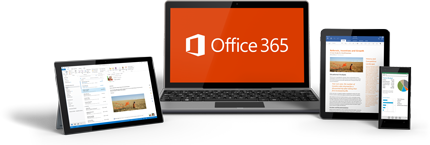How to use the Exchange PowerShell cmdlet Get-Recipient to list and export all email addresses in Microsoft Exchange.
Source : Exchange PowerShell: How to list all SMTP email addresses in Exchange – Oxford SBS Guy
How to use the Exchange PowerShell cmdlet Get-Recipient to list and export all email addresses in Microsoft Exchange.
Source : Exchange PowerShell: How to list all SMTP email addresses in Exchange – Oxford SBS Guy
The following Outlook client versions are fully supported by Exchange server 2013. Please bear in mind there’s a difference between what is supported and what might be compatible with Exchange 2013. All of the Outlook versions listed below have been thoroughly tested by the Exchange Product group:
Outlook 2013
Outlook 2010 SP1 with November 2012 Cumulative Update ( available from http://support.microsoft.com/kb/2687623 )
Outlook 2007 SP3 with November 2012 Cumulative Update ( available from http://support.microsoft.com/kb/2687404 )
Entourage 2008 for Mac, Web Services Edition
Outlook for Mac 2011
Exchange is always considered as a mission critical service; accordingly and to assure a smooth upgrade process without any interruption to mail services, you have to spend some time on planning your deployment and upgrade. A good start can be through the below links:
Exchange 2013 TechEd Sessions and Labs which includes session about Exchange 2013 high availability, virtualization, managed availability, retention, site mailboxes, modern public folders, transport, unified messaging, Outlook Web App,EWS, and the most important one in case you will be doing a migration is Exchange Server 2013 On-Premises Upgrade and Coexistence
Sizing Exchange 2013 Deployments by the Exchange Team Blog
Source : Part 1: Step-by-Step Exchange 2007 to 2013 Migration – GD Bloggers – Site Home – TechNet Blogs
Permet de créer un modèle de certificat avec une validité supérieure à 2 ans, valable pour MS Exchange et TS Gateway

Le but ici est de segmenter les carnets d’adresses , par exemple lorsque 2 sociétés partagent le même portail Office 365,e t que l’on veut que les 2 sociétés ne voient que leurs utilisateurs, groupes, ressources respectifs.
NB: les scripts de segmentation fonctionnent également pour Exchange 2010 et 2013.
Pré-requis:
source: http://www.weatherhead.net/office-365-administration-with-one-powershell-console/
https://www.microsoft.com/fr-fr/download/details.aspx?id=41950
Posted by Tim Harrington
Fact: Email Address Policies (EAPs) will apply during a mailbox move. While everyone is currently planning on their Exchange migrations to Exchange 2010 :), you will want to take some time to look at your EAPs and users that are exceptions to the policies. The last thing you want is that call right after the migration saying that my email address has changed.
suite: http://howdouc.blogspot.fr/2010/09/email-address-policies-and-mailbox.html
BY
In prior versions of Exchange an organisation that wished to restrict who could send outbound internet emails could apply the restriction on an SMTP connector. In this example emails sent to the * address space are rejected by default unless sent by a group listed in the “Accept messages from:” list, for example a group named “Internet Email Users”.
Exchange Server 2007 uses Send Connectors for configuring where outbound internet email is delivered, much like an SMTP connector in Exchange 2003 Server. However, the Send Connector is not the place to apply restrictions on who can send outbound internet email. These restrictions are instead applied with Transport Rules
suite: http://exchangeserverpro.com/restricting-outbound-email-with-exchange-server-2007-transport-rules/
by
source: http://helpdeskgeek.com/how-to/how-to-view-the-size-of-user-mailboxes-in-exchange-2007/
For example, here is the command line you would use to get a list of all mailboxes with their sizes sorted from biggest to smallest. It will also give you the number of items in the mailbox and will list the sizes in MB.
Get-MailboxStatistics | Sort-Object TotalItemSize -Descending | ft DisplayName,@{label=”TotalItemSize(MB)”;expression={$_.TotalItemSize.Value.ToMB()}},ItemCount
If the above command does not work for some reason, you can also try this one:
Get-MailboxStatistics -Database “Mailbox Database” | Sort -Property TotalItemsize | Format-Table DisplayName, LastLoggedOnUserAccount, ItemCount, @{expression={$_.totalitemsize.value.ToMB()};label=”Size(MB)”}, LastLogonTime, LastLogoffTime
I was playing with the new Exchange Client Network Bandwidth Calculator the other day and one of the input section asked me to enter the several Outlook client versions for accurate calculation. I couldn’t find a reliable source to compare the “Client versions” shown in the Get-LogonStatistics cmdlet.
For those you do not know what it does, it basically fetch the version of Outlook running for individual users. To get details of all Outlook versions connecting to your exchange organization:
Get-MailboxServer | Get-LogonStatistics | Select UserName,ClientVersion,LastAccessTime,ServerName
suite: http://msexchangeguru.com/2012/10/08/outlook-client-versions/